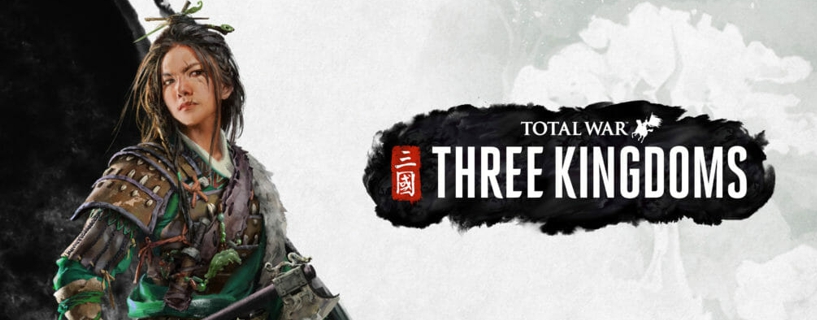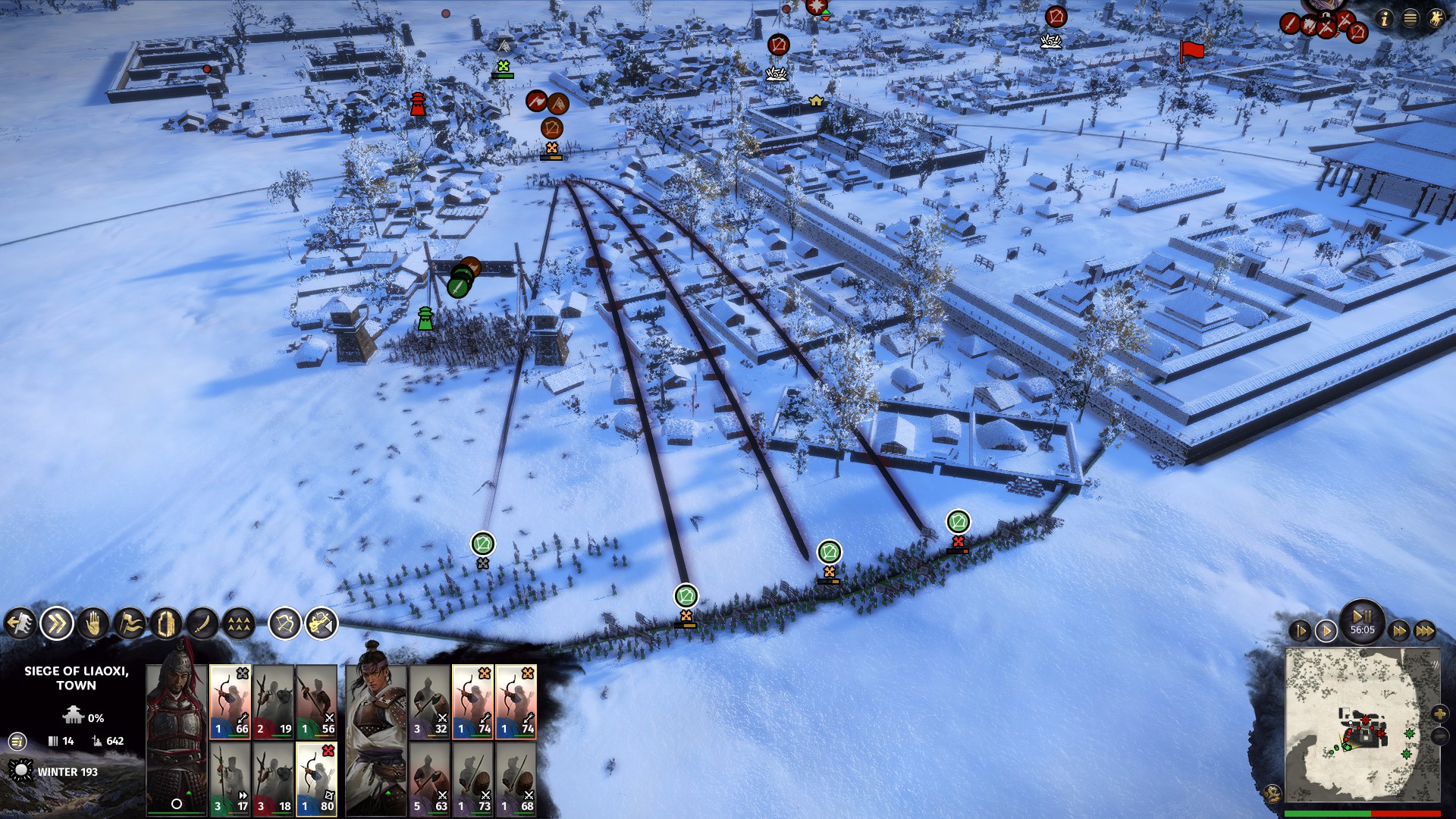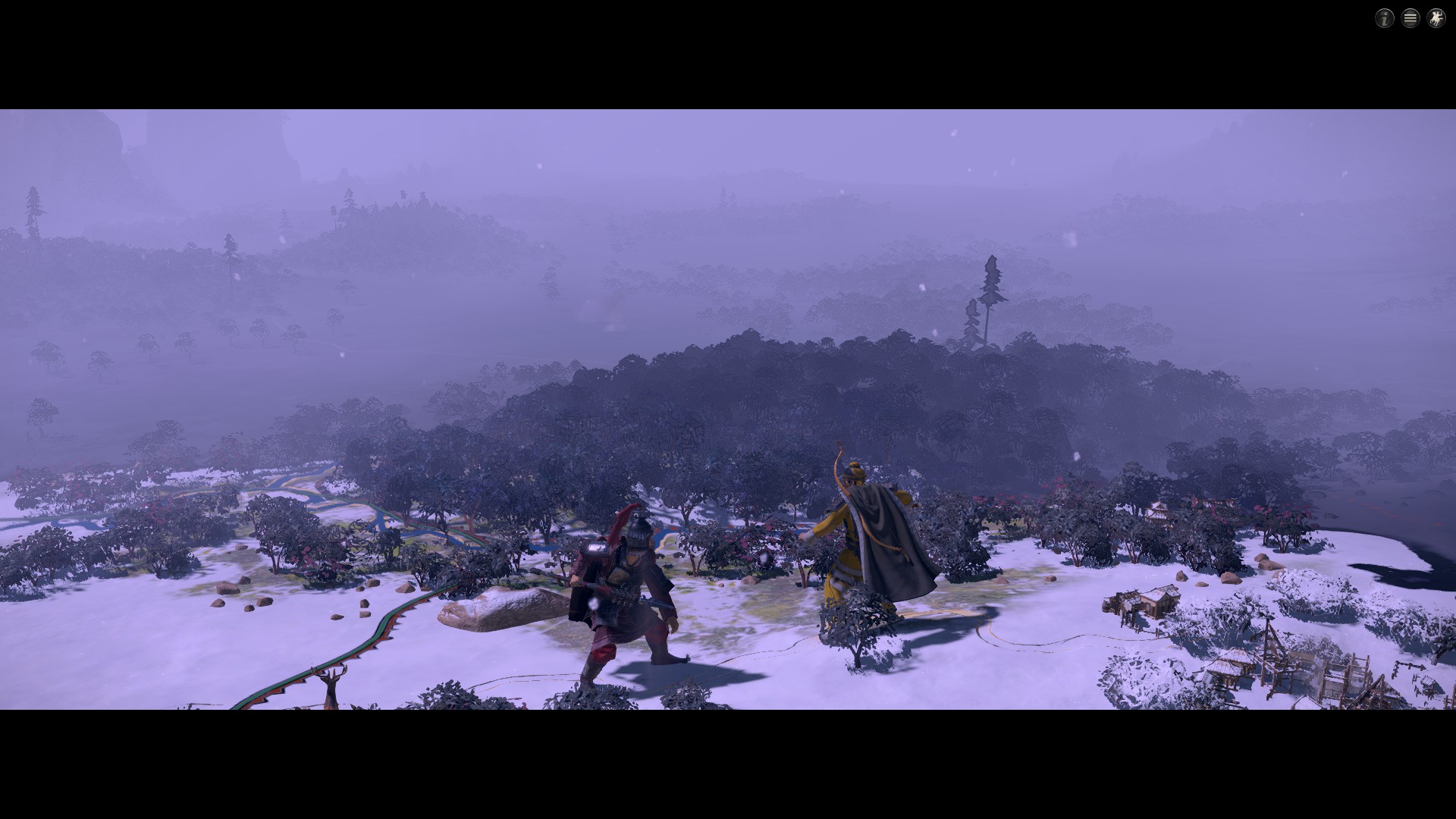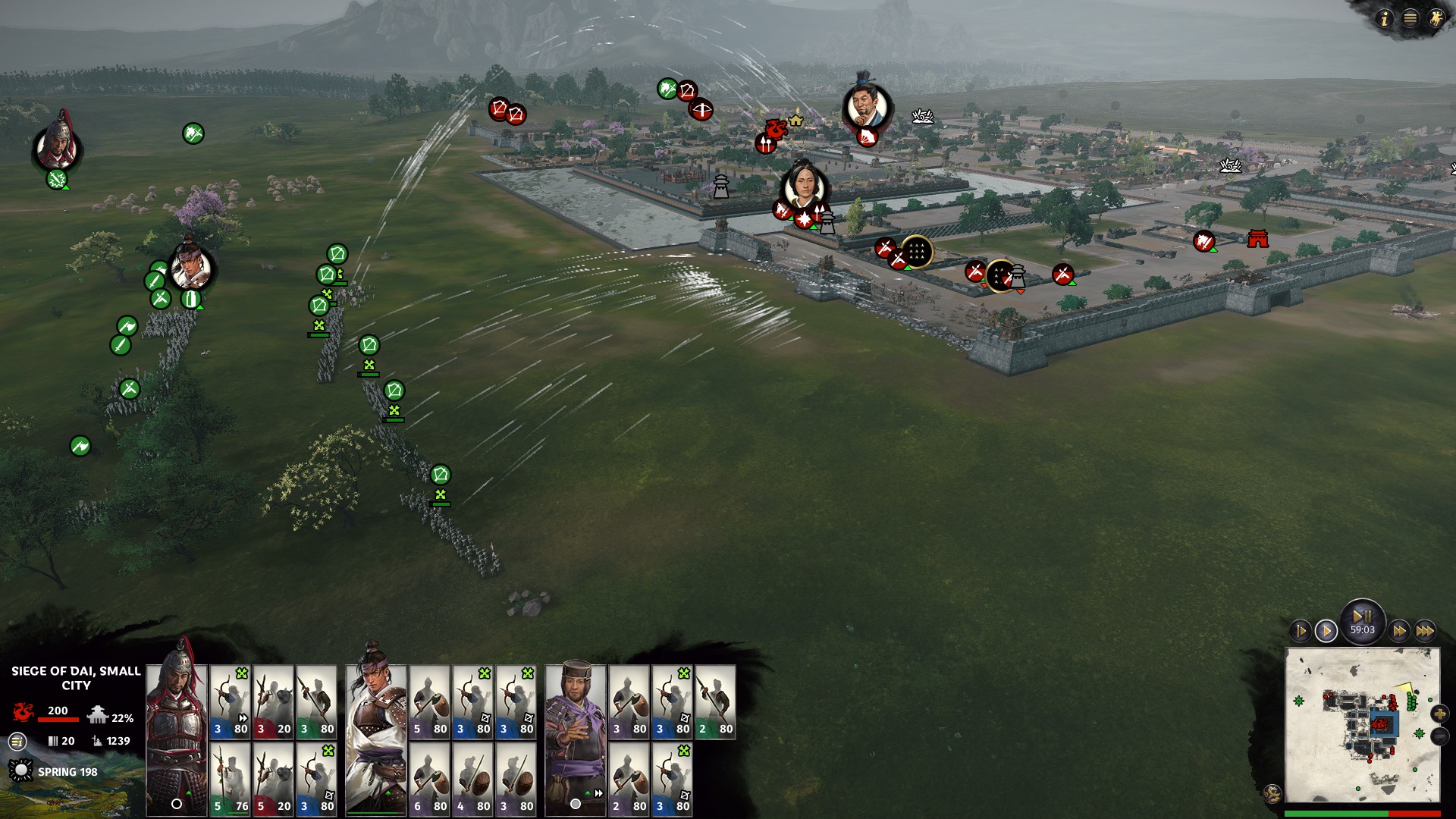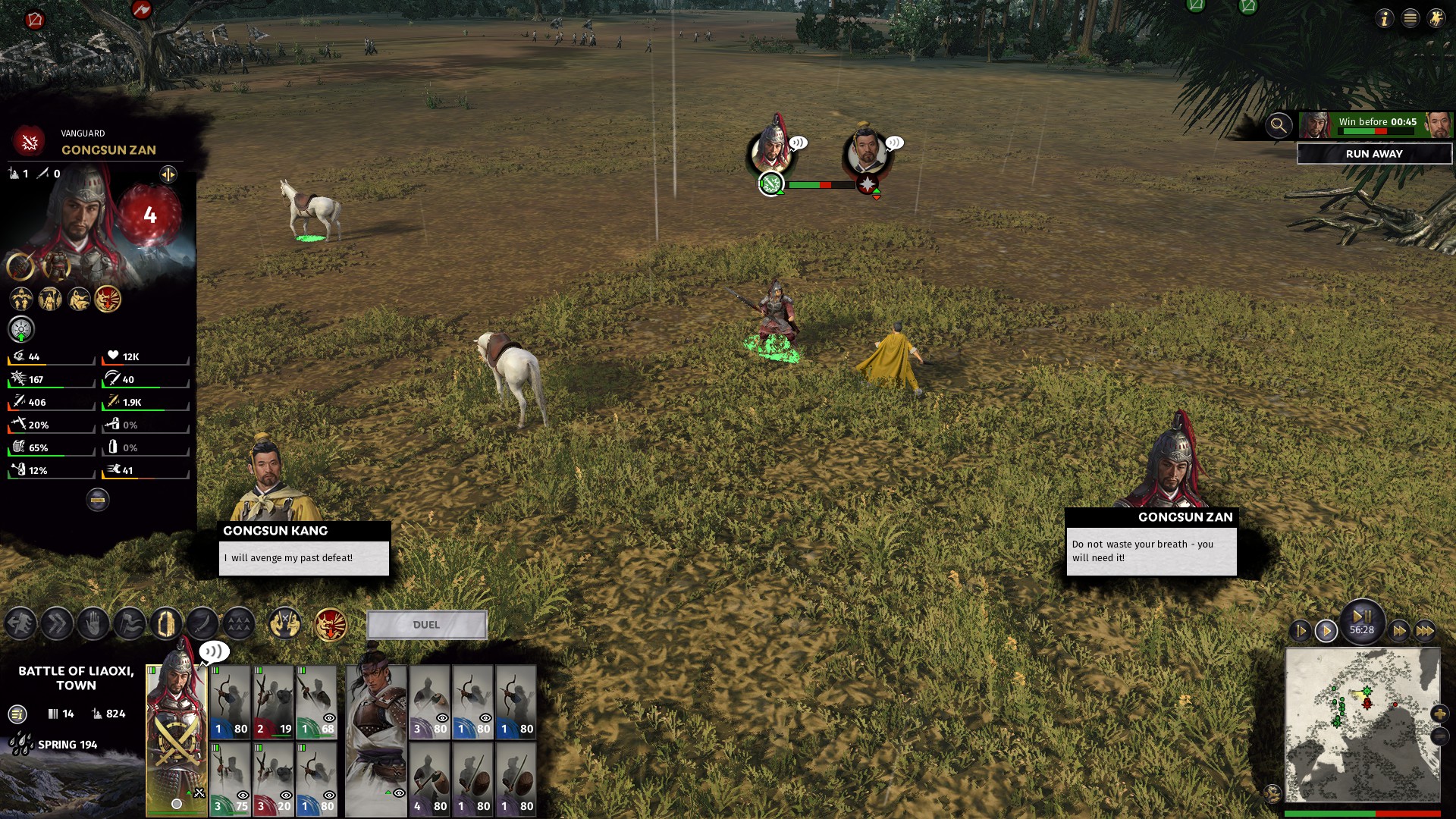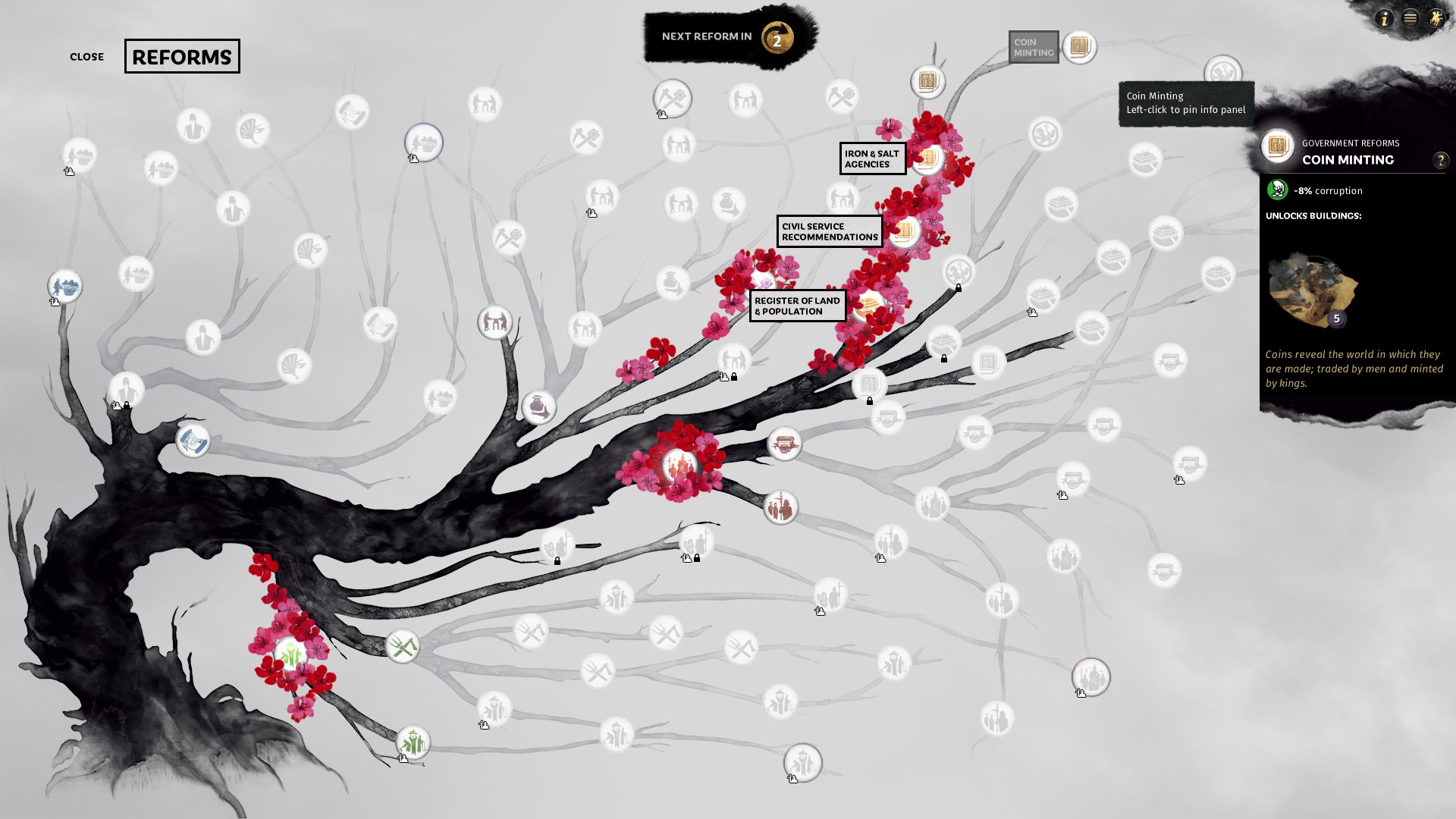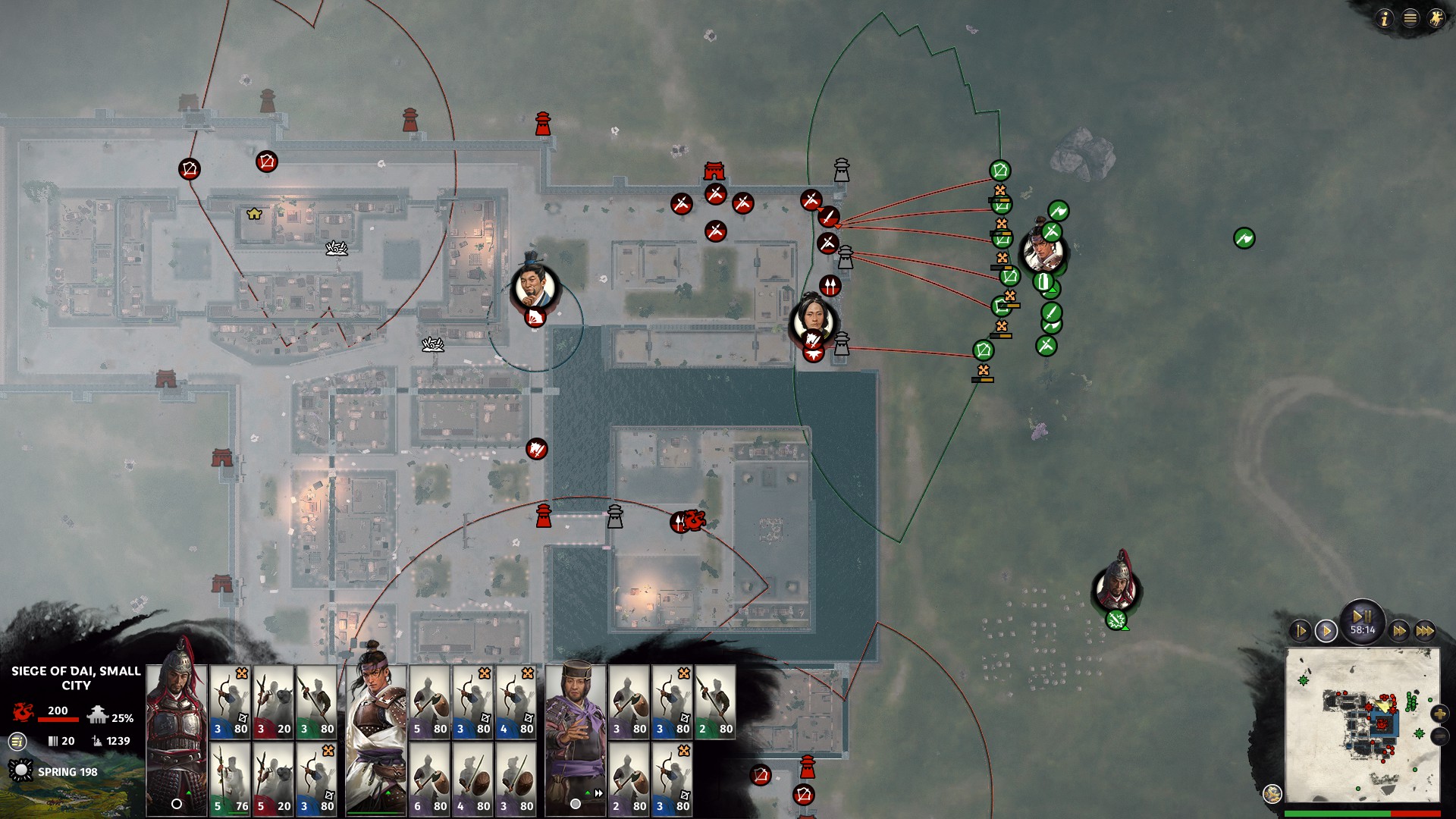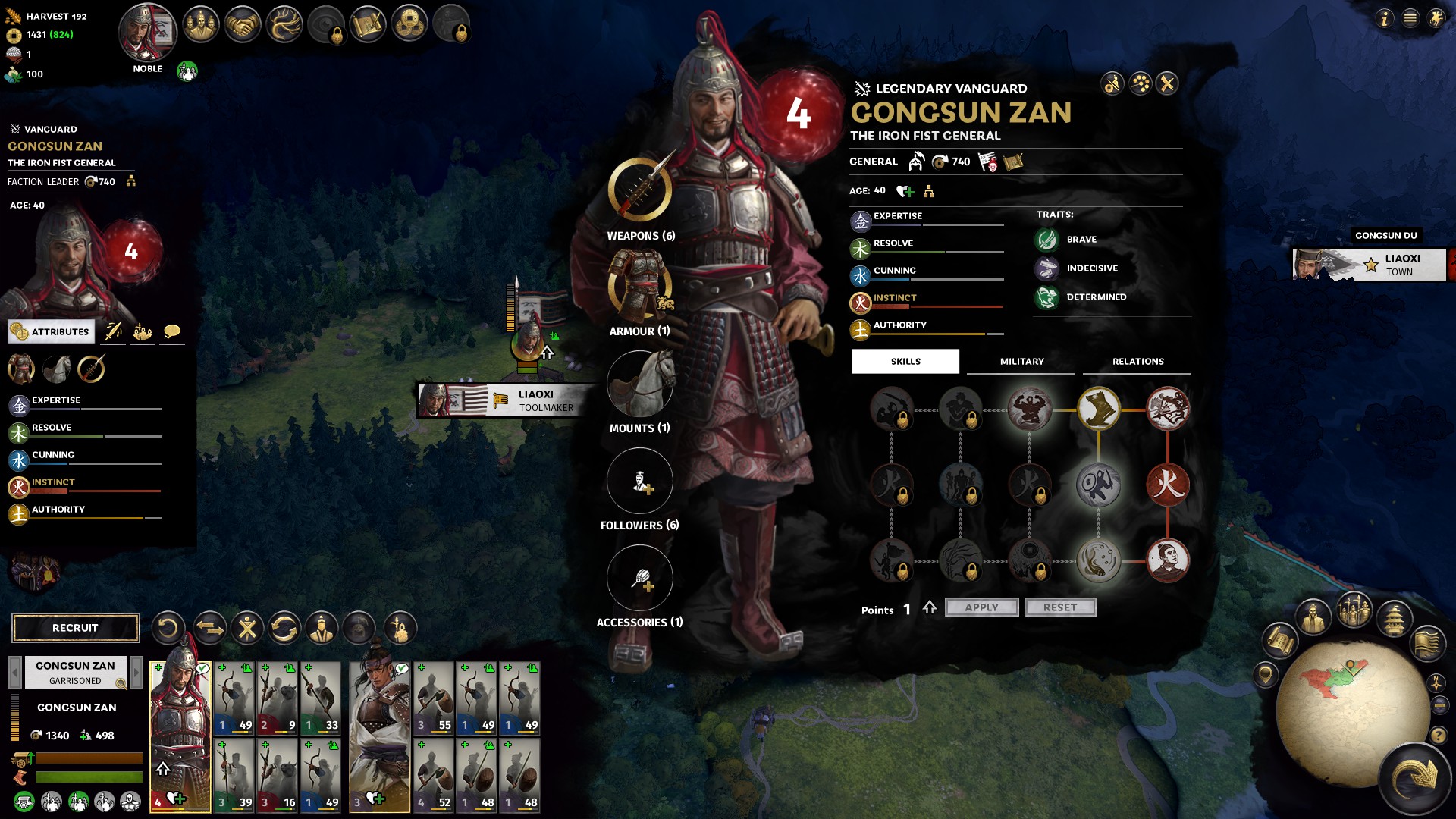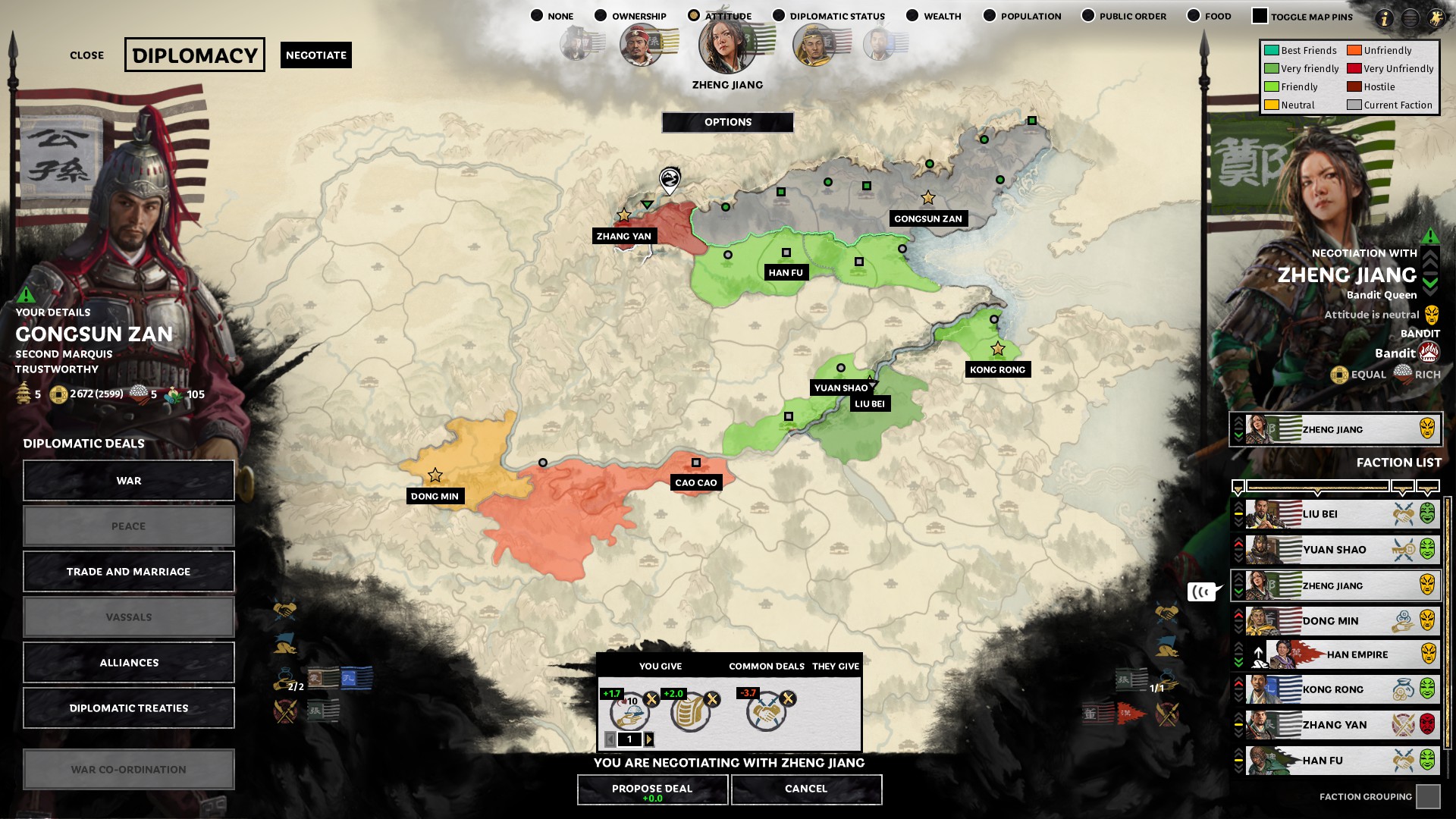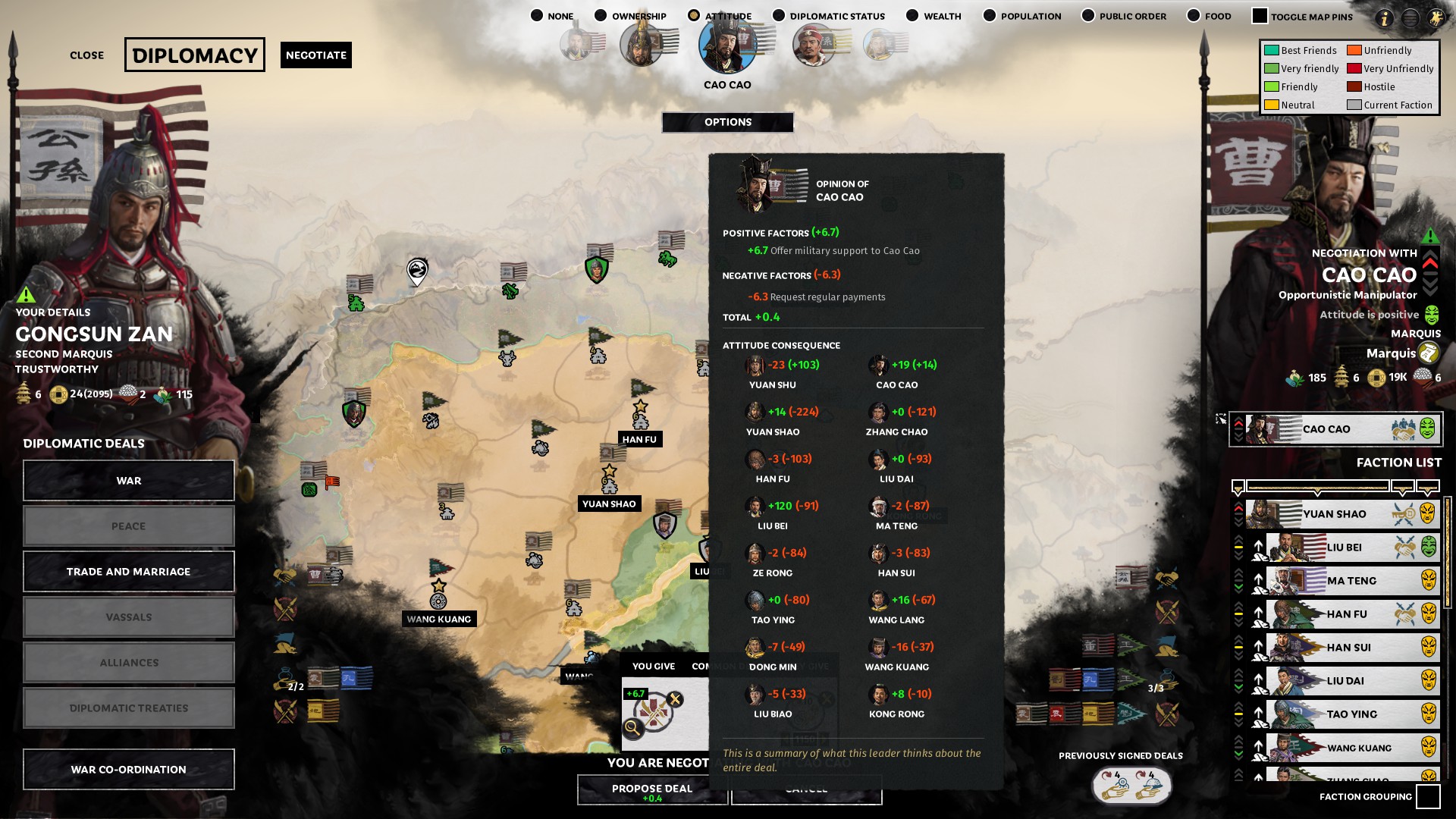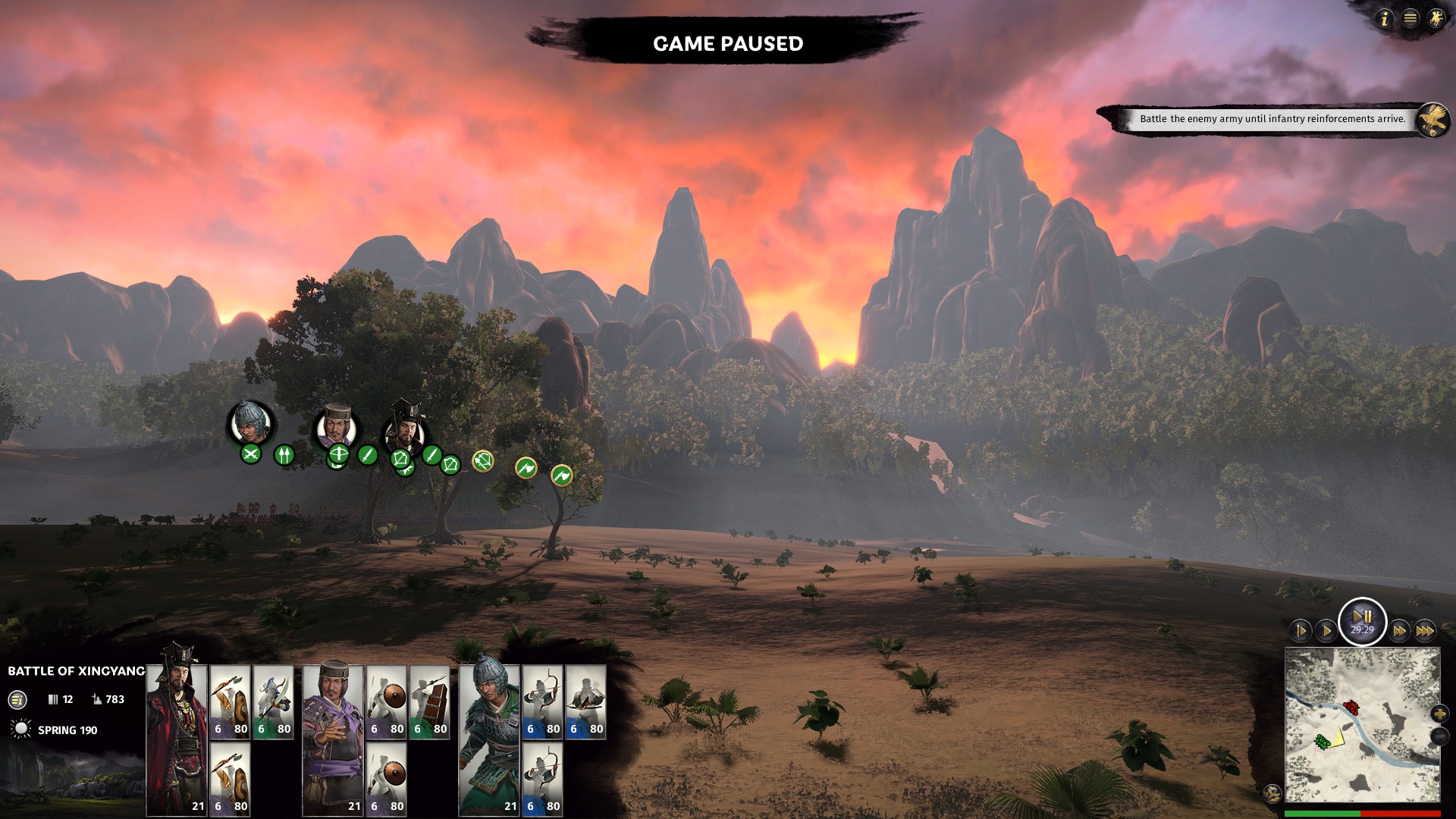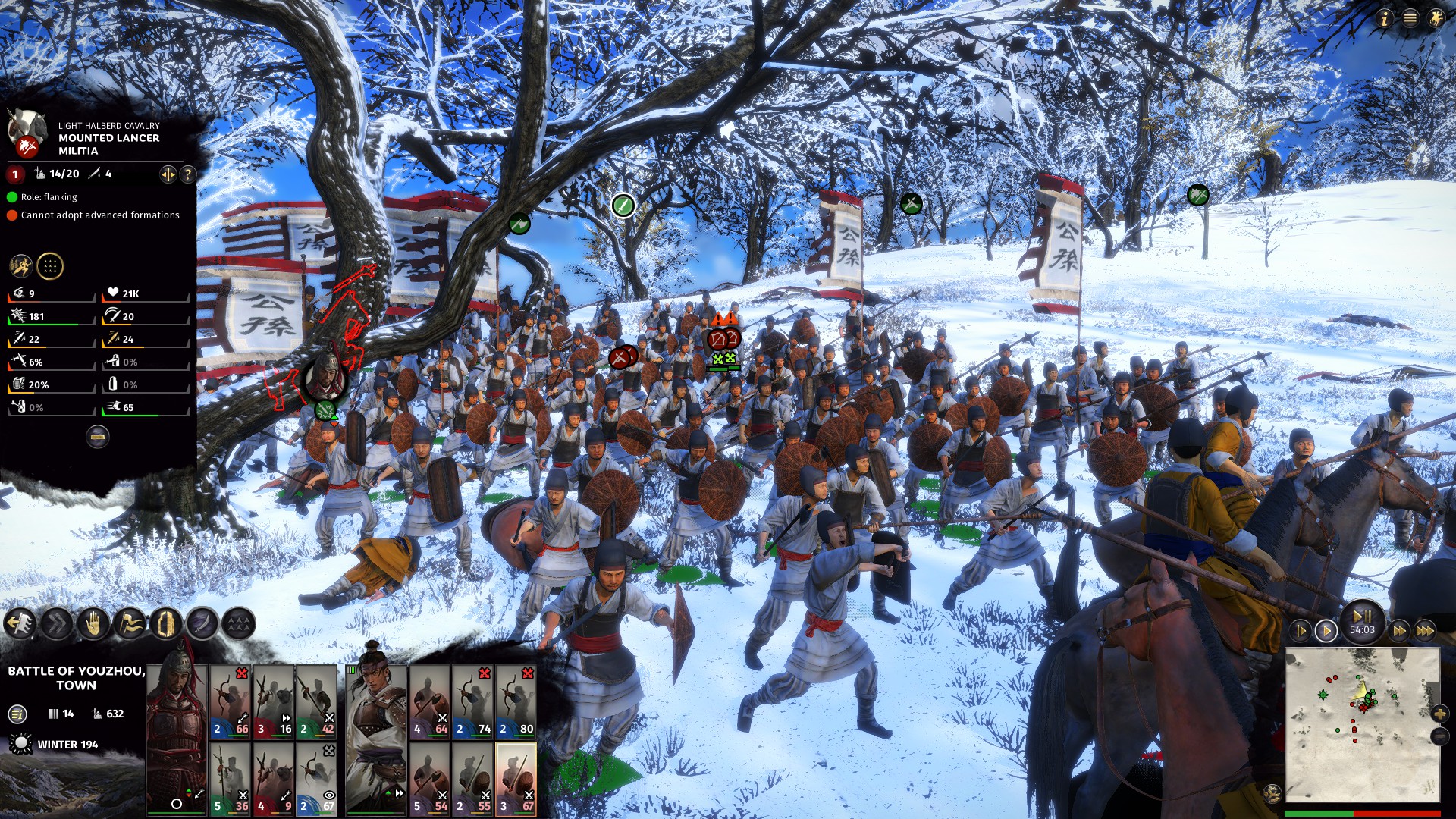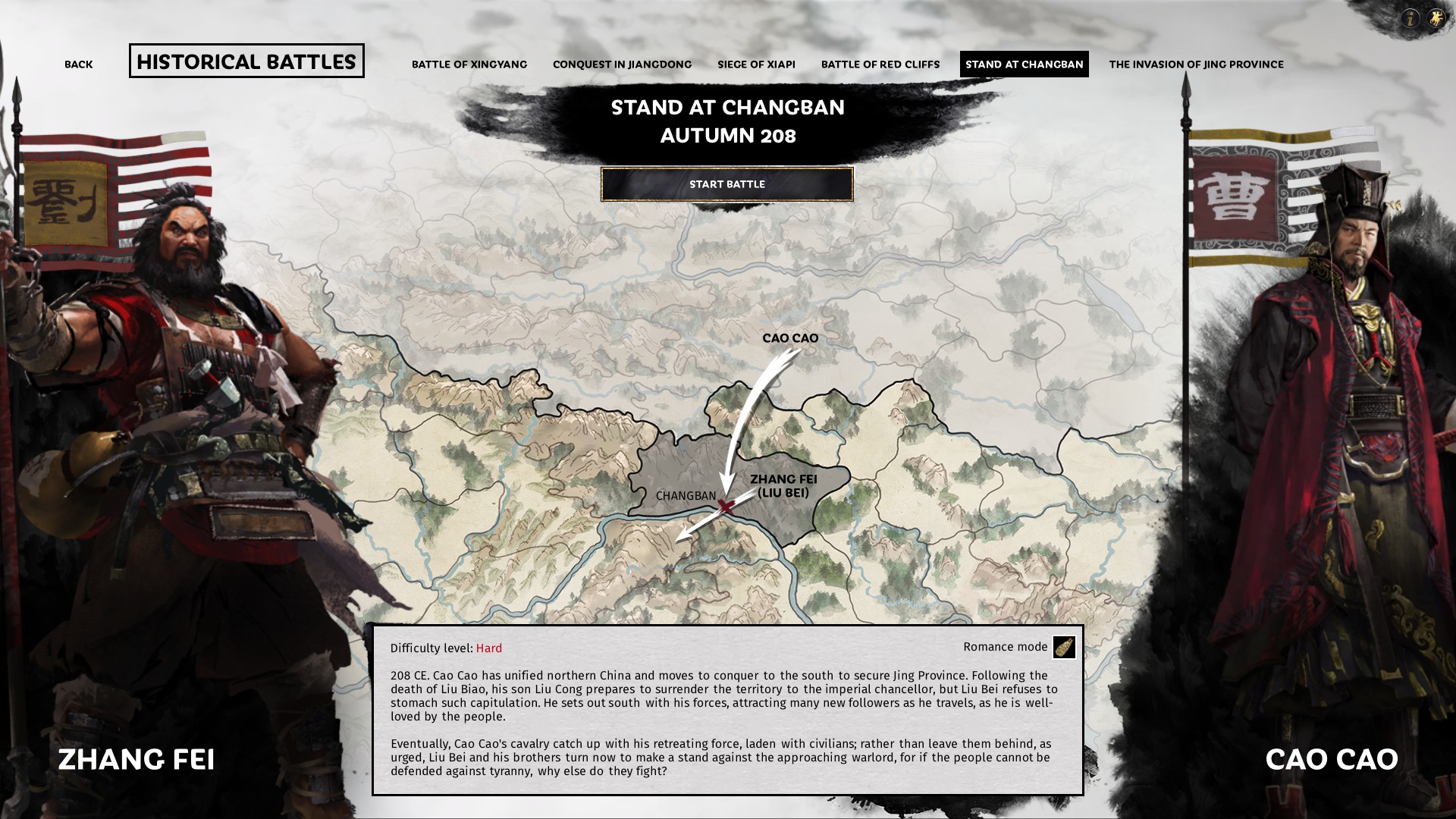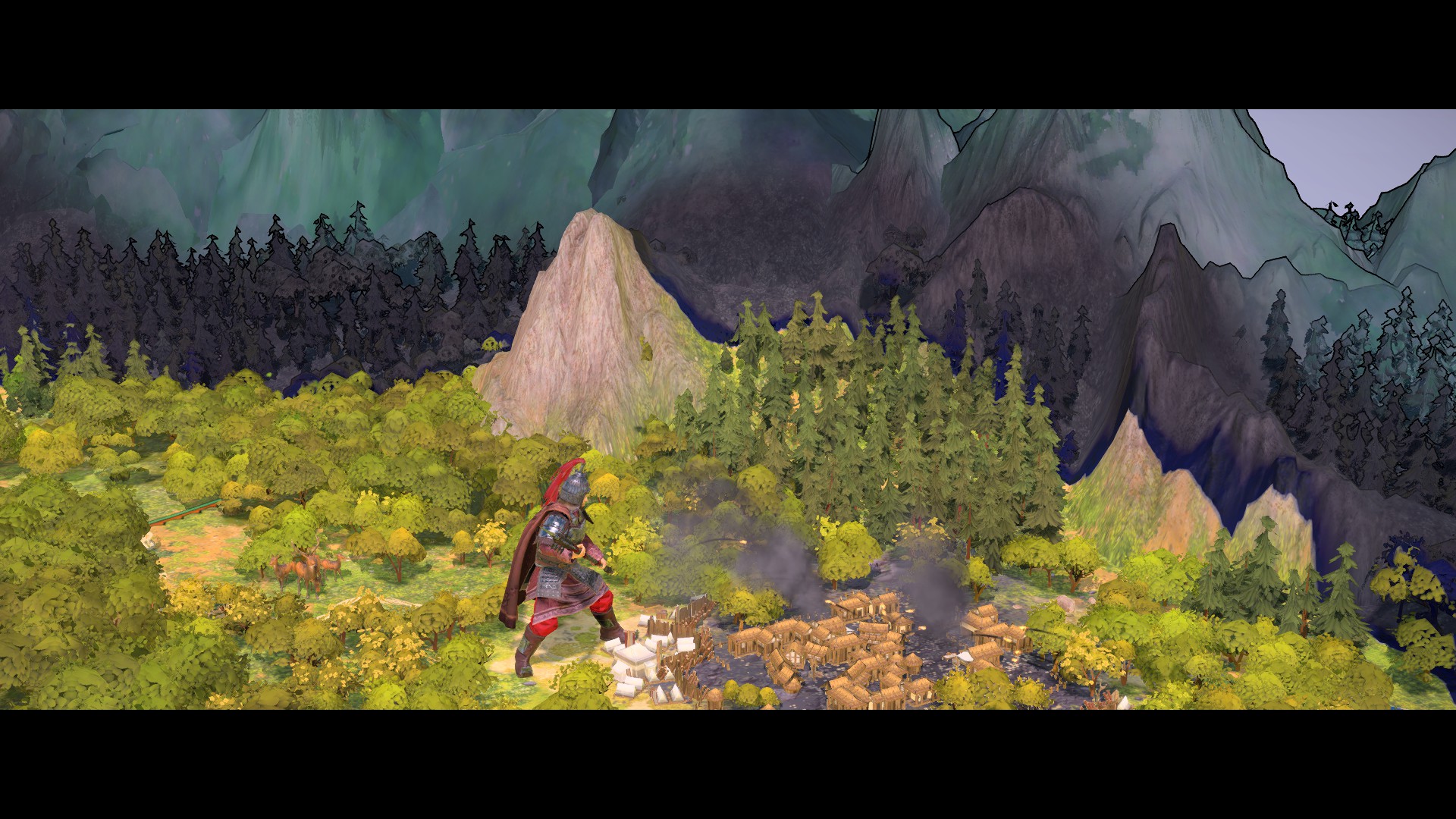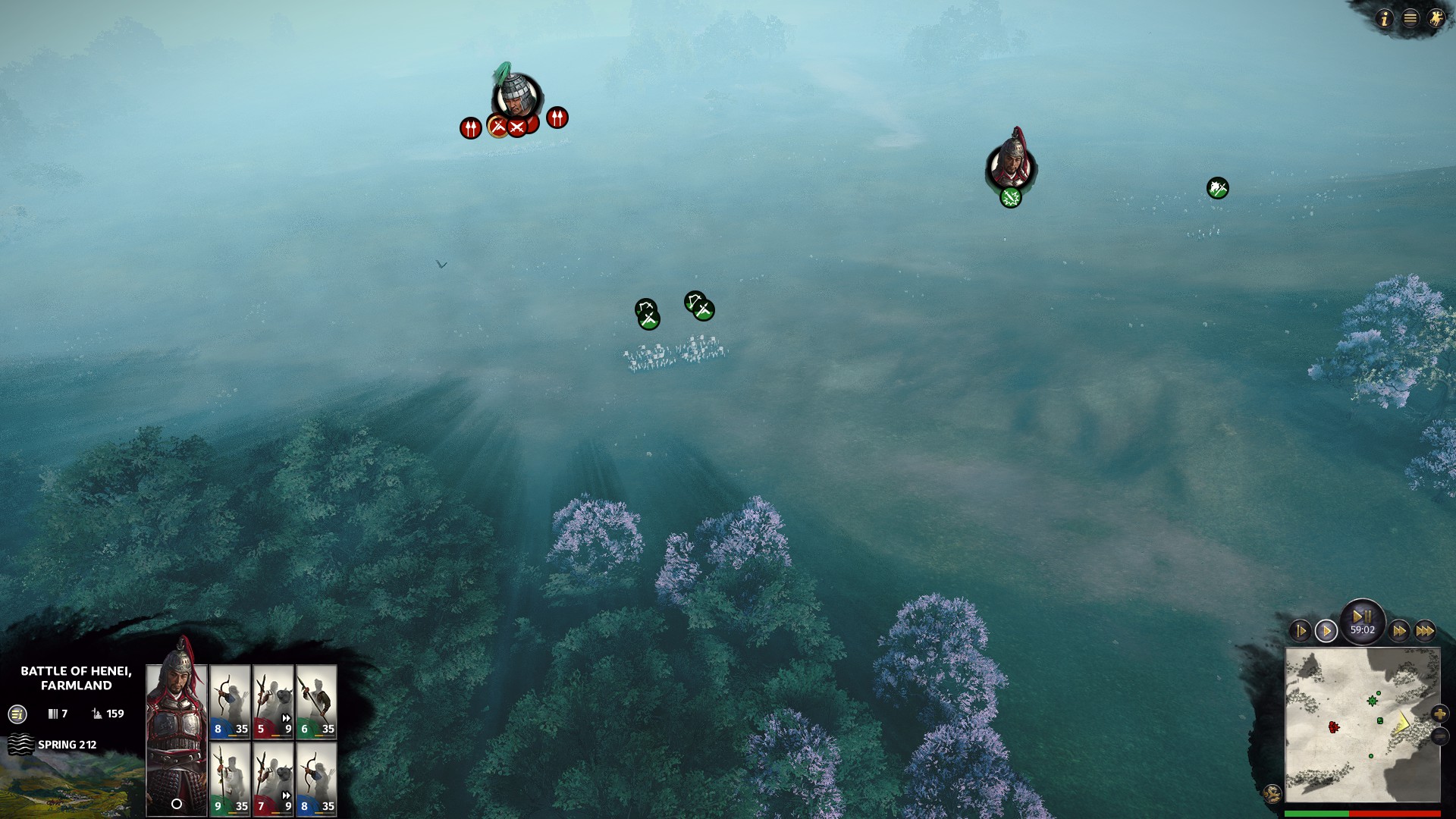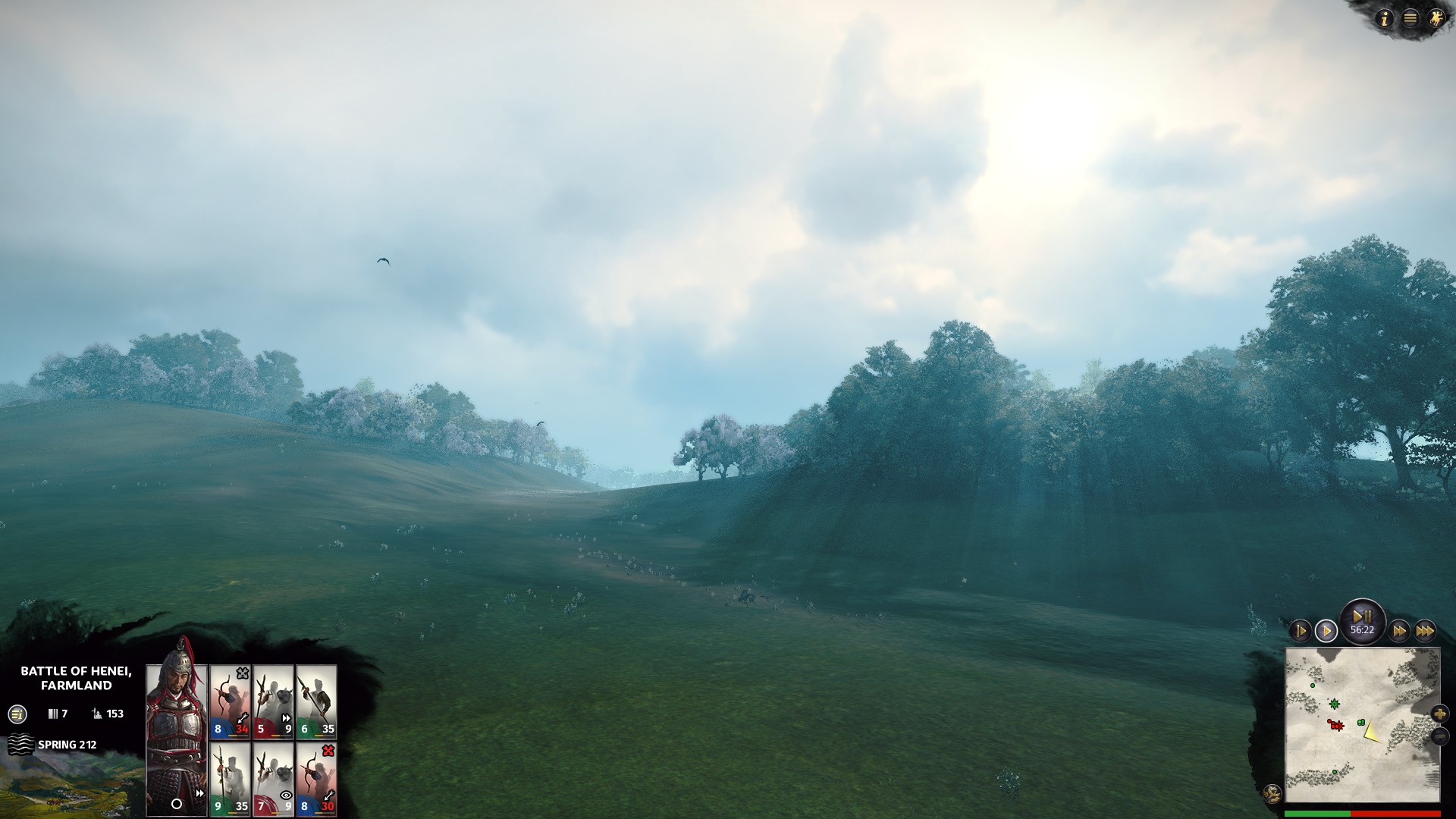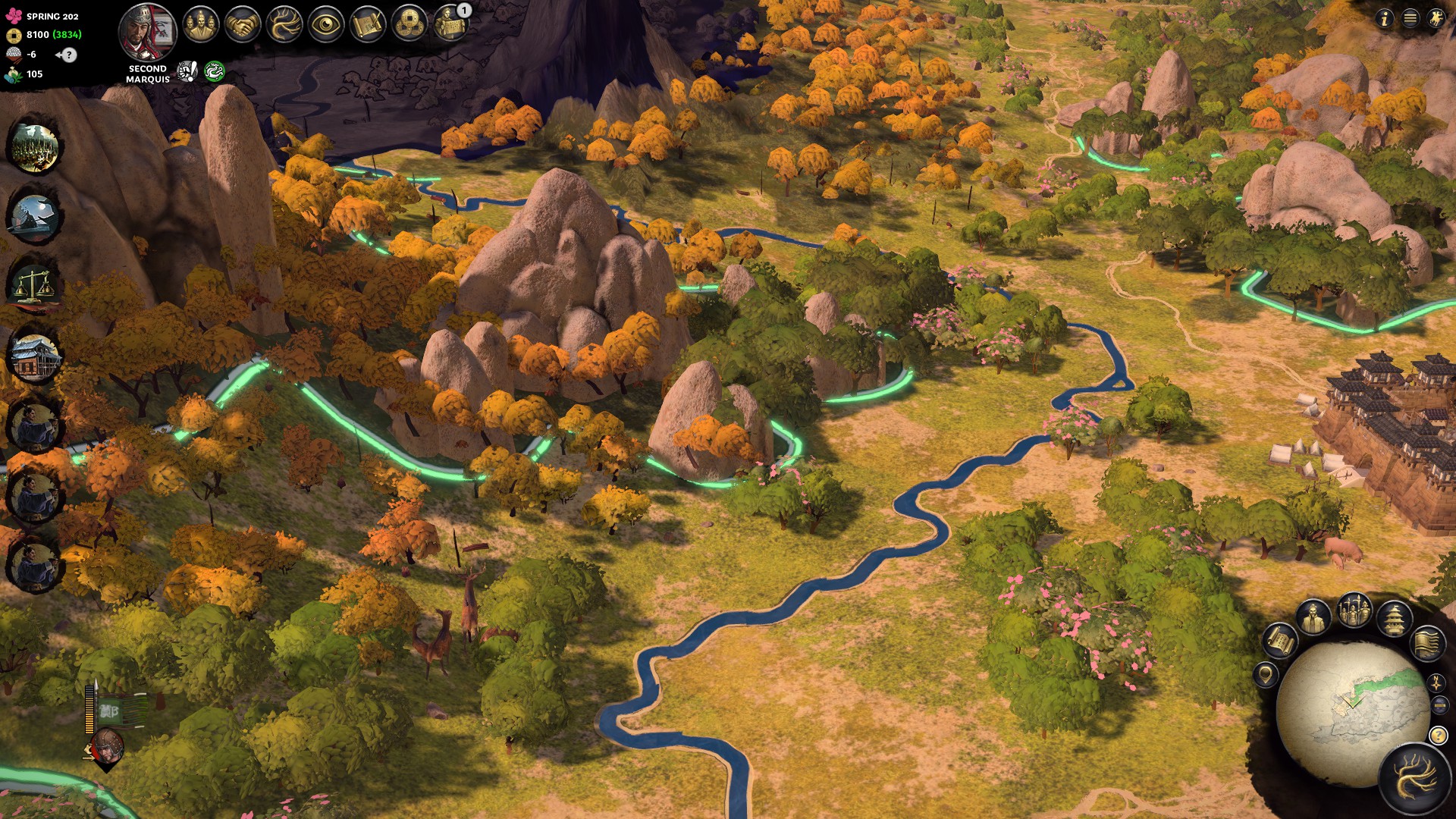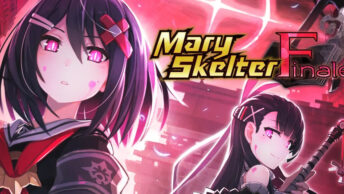Manipulate your foes, become the emperor of Ancient China.
Type: Single-player, Multi-Player
Genre: Strategy, RTS, Simulation, 4X
Developer: CREATIVE ASSEMBLY,
Feral Interactive (Mac, Linux)
Publisher: SEGA,
Feral Interactive (Mac, Linux)
Release date: 23 May, 2019


Total Warhammer 3 Kingdoms
Besides revisiting well-trodden emblematic eras such as antiquity or medieval ages, two other topics were on many people’s bucket list regarding the Total War series: the violent fantasy world of Warhammer, and Ancient China. Finally, one after the other, Creative Assembly delivered the much-anticipated titles Total War: Warhammer and Total War: Three Kingdoms. The titular three kingdoms followed the end of the Han dynasty, a period of war and struggle starting in 169 BCE that eventually led to reunification in 280 CE.
Gameplay showcase by Creative Assembly
An interesting subject matter
While this particular period is famous for Chinese audiences, in the West gamers mostly know it through the Romance of the Three Kingdoms series by Koei Tecmo. There are two main pieces of literature covering this turmoiled era: Records of the Three Kingdom by Chen Shou in the third century and Romance of The Three Kingdom by Luo Ghanzhong in the fourteenth century, one of the major classical novels of Chinese literature. The latter novel heavily romanticized and dramatized the conflict, focusing on the lives of the feudal lords eventually at the head of the three kingdoms, their intrigues, friendships, rivalries, and betrayals. This seems to have been a great source of inspiration for the Creative Assembly, as the developer managed to dynamically include this whole layer in their grand strategy game while also boosting another layer; diplomacy. Diplomacy has always been the most maligned part of this series alongside the AI, so I will try to cover these points as best as I can.
What is Total War?
First and foremost, perhaps I should explain Total War for those that are new to this series, even though it has been going strong since Shogun: Total War was released on PC in 2000. There are two main aspects to these games: gigantic real-time battles that feel very authentic (morale and fatigue are important factors), and managing a faction on a turn-based map. Think of it as a 4X strategy game (explore, expand, exploit, and exterminate) like Civilization, except that it’s much more focused on massive battles rather than peacefully spreading your influence. You can raise armies, capture cities and task them to improve specific buildings in a tech tree to orient their output towards industry or military, and gradually capture new cities to expand your territory, which won’t please your neighbors. I have always had a soft spot for battles in the Total War series because once the camera zooms in the battlefield and both opponents place their troops, you fight with the units that were produced already; there is no base to build in real-time or an economy to manage that could distract you from ordering your troops around. The fights are famously based on a rock-paper-scissor model, with cavalry good against archers, which are good against infantry, which is good against cavalry. However, flank a regiment or attack them from the rear and you can break their morale, which can soon send them fleeing and provide a poor example to their friends, who might also decide that they have had enough. If you factor in snow, hills, bridges, forests and defensive walls during a siege, this is a recipe for epic large-scale battles that are incredibly fun and involving. And whenever things get too overwhelming (after all, Three Kingdom lets you field more troops than the series ever did), then you can press Pause at anytime and calmly assess the situation and take your time to give orders.
Romanticized history
Incentivized by the heroics of the characters in the Romance of the Three Kingdoms novel, Total War: Three Kingdoms features generals that have a very active role in the battles, as they are single-handedly able to kill hundreds of troops. While this move upset some fans who were disappointed that the series leered into mythology rather than remaining as authentic as possible, let us not forget that there have always been fan-made mods that made these games a lot more grounded and realistic than how the base game was. Nonetheless, Total War: Three Kingdoms deals with this admirably: there is a Romance mode in which these heroes are incredibly powerful and in which fatigue is a less important variable, and there is a Records mode in which fatigue is a determining factor and heroes are replaced with a standard cavalry unit, the general being a mere rider among the flock. All in all, heroes of Three Kingdoms are still much more grounded than what we have seen in Total War: Warhammer, even in Romance mode.
Get them looking in the wrong direction
While the AI has some common sense and knows when to protect its archers, sadly I have found that it is so scared of heroes that I could exploit this weakness by sending my heroes all around the enemy army to force the AI to divide its numbers rather than focus on my troops. Most strikingly, during a siege, I could divert the defenses toward walls I had no intention to breach, while my main force was having an easy time facing a reduced number of troops. Eventually, the AI would figure this out and send its archers back to where the action was rather than focusing on my heroes, but this was usually too late. I must admit that this tactic was dangerous because that could mean that the enemy heroes could have a field day against my undefended troops, as heroes are the best counters against enemy heroes. It is also possible for willing heroes to accept duels and fight each other while the rest of the troops do not interrupt them (except if you have no honor and decide to meddle with the fight), and this led to one of my favorite anecdotes. But before I tell you this story, I will simply conclude that while the AI is overall competent, it is much too easy to exploit and divide. Conversely, the campaign map AI is surprisingly reactive and would change their movements if I did a quick save/quick load to defend a city that it was trying to grab from me. Furthermore, the campaign map AI also often attacked me with two armies at the same time, making good use of the possibility to send reinforcements during a battle. This translated into unpredictable battlefields with enemies incoming from two different positions, forcing me to adapt my tactics on the spot.
A scary duel
Ok, so here is my exciting anecdote. I was fighting an army with equal strength to mine, but I was lucky to be in a forested area that allowed me to hide my troops under the trees. Half-way through the forest, there was a large clearing. My plan was to send my general ahead, waiting on the edge of the forest for the enemy army to cross the clearing. Then, my hero would reveal himself and challenge the enemy general to a duel, making me think I would hopefully win since my hero had lots of experience and was thus well upgraded; this victory would remove an important piece from the enemy’s arsenal while lowering its morale. I actually managed to challenge the enemy general right before his archers spotted me; what I didn’t expect was that my general rode right into the enemy general and the impact of the charge made them both fall off their horses. I didn’t know that this could happen! They kept fighting right as the enemy army was marching around them. Right until this point, I wasn’t in a panic yet. I was even cheerful when my hero killed the enemy general. The panic overtook me right when I realized that up until this point everyone was bound by honor not to intervene, and I had suddenly lost this “protection” while standing in the middle of the enemy army. Hostile troops were marching between my horse and my general; for a brief moment I hoped to see the horse unrealistically glide at light speed toward the feet of its master, but when I realized that this was not going to happen, I knew that I had screwed up. My general was all alone, hundreds of men and horses at his heels. My heart was pounding in my chest as I ordered him to run to the cover of the trees as I urgently forced my soldiers to march to the clearing and protect him; my precious battle formation was completely shattered! Luckily, all these halberds pointing in the direction of my pursuers managed to dissuade the enemy cavalry from killing my general. This experience made me ecstatic; this sort of unique situation is the reason why I like battles in this game: adapting my strategies to surprising events and overcoming the odds.
Recruiting elite soldiers
Something that I liked in Total War: Three Kingdoms relative to older entries in the historical series is that the development of a city within a faction does not limit which troops I can line up. For instance, in the Rome: Total War of old, you basically had a few cities that were a powerhouse for advanced troops, and if you were somewhere else then you couldn’t recruit anything but peasants. In Three Kingdoms, you unlock new troops through a (pretty) global tech tree, and then specific skills linked to the generals unlock specific abilities such as fire arrows or wedge formations for the cavalry. This means that base troops are more common across the factions while there will be disparities relative to advanced troops and skills, but in any case, you can be anywhere on the map and easily field a new army.
China as a gigantic sandbox
I found that this particular aspect of the game made me approach the campaign map very differently from how I played in the old games: previously, I would choose a location because it had the armies that I wanted to play, such as Italy so that I could control the Romans; I wouldn’t want to start the campaign with a nation that I didn’t like. In Three Kingdom, all factions belong to the same culture, which will inevitably decrease the variety of the factions that you encounter. But instead, heroes color your experience, and you can choose your starting point according to strategical flair rather than because it’s your favorite people; for instance, I chose to start with an army in the northeastern part of China, so that I would grow my empire from top to bottom without any risk of being backstabbed (oh, how naïve I was). Interestingly, each territory is known as a commandery with a main city and at least one other smaller city dedicated to harvesting a specific resource or developing a specific industry, such as mining iron ore. Each can be captured independently, and you will be striving to acquire the other half to fully own the territory.
Characters and diplomacy are at the heart of the game
As I mentioned, your heroes inspired by the Romance of the Three Kingdoms will inevitably affect your campaign. All these characters gradually learn traits, which not only have a boost effect on your empire or your armies, but they can also be incompatible in relation to other characters. You might want to keep an eye on that, as dissatisfied characters that you don’t promote or force to work with someone that they don’t like might eventually leave your cause. In the worst-case scenario, they can take an entire city with them! I won’t go into the minute details of how heroes work (actually, it’s really hard to see, as I will explain later), and I will mention the second innovative layer of Three Kingdoms: diplomacy. This whole aspect of the game is much more involved than previous entries in the series! There are many possible interactions, related to war or trade; each proposition has a negative or positive impact on the deal, so you need to carefully balance your proposition if you want your interlocutor to accept what you propose. Thankfully, there are clear numerical indicators that help you fine-tune the deal. As the campaign progresses, factions start forming increasingly bigger alliances and coalitions, which has a tremendous impact on your progress. If you are inside a coalition, you might have to vote on accepting new members or you might be pushed to agree on a new war against someone threatening your ally. Conversely, the alliance game will make you think twice before assaulting new territories, as you might upset someone close to your undefended border that you were friends with. There are many more possibilities opened up by the diplomatic layer of the game, such as having vassals or being one of them. All of this adds new ways to increase your influence and territory… or it might restrict you in ways that you didn’t expect.
Just let me kill!
When I started the game, for some reason I was given the objective to eradicate one of my neighbors with whom I had a perfectly good relationship. I often felt at odds between what I wanted to do and what the game wanted me to do (although I need to make it clear that there is no obligation to follow the missions suggested by the game), and then with my own progress in the campaign. Once I had obliterated all my enemies, my borders were only touching friends, and I had to declare war on them if I wanted to expand. Once I declared war, the game made me lose diplomatic trust because I breached a treaty. I then tried to do it the right way: cancel the cease-fire, wait for a few turns so that it’s not “too close” and also to allow other dealings with that faction sufficient time to come to an end, then finally command my attack. Between this, managing food, managing my economy and managing the relationships between my people, I was disappointed that I was doing a lot of waiting and not doing a lot of killing. After all, I play this series for “Total War” rather than for “Being nice with each other”!
Money buys happiness
Before I delve deeper into how managing my empire annoyed me, I will also add that the diplomacy menu was irritatingly confusing. In between my turns, some random peeps would often ask to trade for some items in my possession, and I was bewildered as to how they knew up to the minute detail of my inventory while I couldn’t even see where they were located on the map. Or when someone asked me to take part in their coalition and I wasn’t interested, I would exploit the “balance” of the deal to simply transform the operation into me giving them a few coins in exchange for nothing but raising my standing with them, and they left the table happy with our dealings, rather than being angry that I refused their proposition to join forces.
Numbers everywhere
Not only was the diplomacy menu difficult to get to grips with, managing the rest of the campaign is no easy feat. Let’s take food, for example. Even though I purposefully activated all tutorials and tooltips, never once did the game mention how it worked. For a while, I didn’t even know where to look to find out about how much food I had! I eventually found the number on the top left of the screen, but there is so much on display that it was easy to miss. And then I struggled to understand how to produce more food for my empire; there were buildings such as irrigated farms that I could develop in my cities but I never understood whether they actively produced food for my whole empire or simply decreased the amount of food consumed by that specific city. Same with my heroes, their skills can sometimes affect the whole faction or only the city that they administer, and it took me a long time to find out how to add an administrator to a city. And I’m still struggling with where to find out exactly why some characters like each other or not. There are so many factors and parameters at play in this game that it’s all very deep and complex, but the information is both overwhelming and sometimes really hard to find. I watched the developer’s tutorial videos and even read the whole glossary, and yet I still have a hard time understanding some inner details of the game. I would even go as far as to say that if you are new to Total War, this is definitely not the game that you should start the series with, as it is not at all accessible and it utterly fails to explain itself to its players. I mean, I certainly didn’t expect Three Kingdoms to lose its players with a long and dull text tutorial right at the start and I am thankful that the game didn’t do this, but many important things should have been explained gradually to the player and the UI itself often fails to convey useful information in a clear manner. For instance, in the diplomacy menu, I often struggled to see where my interlocutor was, who they were friends or enemies with, and the potential repercussions of my decisions onto other factions. All of this could be gathered (I think), but it wasn’t easily conveyed to me. It’s a great thing that this game has lots of complex systems that will make each player’s campaign unique, but it’s a lot to take in, and the game could do a better job of letting its players know what they are doing. Even though I wasn’t satisfied, I can’t say that no effort was made, as there are still many ways in which the interface managed to be helpful.
Too much to talk about
There is so much to this game that there could be a lot more to describe, such as an interesting spy network that can let you impact another faction in minor or extremely major ways if you get your spy recruited as an enemy general, but this review is already long enough, so I will now wrap up this up and move on to the rest of what the game has to offer as well as the technical aspect.
Game modes
Two players can play the campaign online, letting them both decide how they interact with each other (as allied or enemies) and whether they want to reach the main objective (becoming emperor) together or separately. It’s also possible to play ranked battles online, and custom battles with up to eight participants. These give each player (or AI) a specific budget and then they buy their troops directly, which is neat and I always regret it when other strategy games don’t feature something like that. There are also six historical battles, reenacting famous bloodsheds in geographical locations as authentically as possible.
Art
Graphically, it’s gorgeous. The UI has many elements of Chinese paintings and the campaign map is lush and cute, it changes according to the season and a night and day cycle; what is outside the line of sight of your faction almost looks like it was drawn with ink and I love this effect. Before and during battles, the generals throw philosophical one-liners, and it’s actually possible to set all the voices to Chinese. Even without going to that length, I was completely immersed in the three kingdoms time period.
Once in battle, there are some beautiful landscapes to behold, and a lot of variety in the weather effects and general atmosphere. I was amazed when I witnessed subtle sun rays piercing the clouds, crowning the silhouette of cherry blossom trees through the fog: this game can deliver stunning sights. You can either scroll up to have a strategic view of the battle or zoom in until you see the faces and expressions of each soldier; they have just enough facial differences as to not strike your eyes as an army of clones. The level of detail and animations that Creative Assembly is consistently capable of delivering is simply incredible. What’s most inconspicuous in its absence is blood, as there is none. In all recent entries in the Total War series, blood is usually sold separately as a DLC. It is not the case for Three Kingdoms as of yet, but I wouldn’t be surprised if it gets released soon.
Technique
While I can’t go into the specifics of how the game will run on each computer, you need a good graphics card from at least the past few years if you want to run this game in good conditions. In Low settings, the terrain looks ugly, but in Medium it starts to look good. High and Ultra are beautiful, but I couldn’t play them for long as my framerate would drop dramatically (my computer is starting to get old, but this is also a very demanding game). If you struggle to maintain a good framerate, you can decrease the number of troops that are displayed for each unit. I didn’t suffer any crashes (in the forums, some people did) or encounter any bugs, except that one time when the AI couldn’t see me hidden in the trees and decided to stand there waiting, although as an attacker it was supposed to chase me down or suffer a defeat.
Verdict
Three Kingdoms is impressive in its complexity. As usual, I loved the Total War battles even though the AI is too easy to exploit, and the heroes in Romance mode were fun to play. What makes this game different from the other historical entries in the series were the relationships between characters and the layers of diplomacy, as they constantly require you to pay attention to the politics as it dynamically impacts the shape of your faction in minor and major ways. No two games will be the same, and everyone playing Three Kingdoms will have interesting stories to tell. However, even though the game is incredibly deep and complex, relevant information can be hard to find. Each action has consequences, but since it is not always clear exactly what, managing your empire can be a daunting task. Three Kingdoms is a great game that you can easily sink dozens of hours into, but it is not the best starting point for beginners nor the best title for players who only want to wage epic wars between very different nations without worrying whether their underlings and rivals are happy or not. If you always felt that Total War would be better if diplomacy and relationships were at the forefront and had a more powerful impact on the course of the game, then this entry in the series will please you immensely. Total War: Three Kingdoms is a beautiful and thoughtful homage to the titular era, you might soon find yourself deeply immersed in Ancient China.

